Have you ever wished you could really make your masked images pop? Or perhaps you'd like to have multi coloured masked images but you have a solid coloured base? If so, then here's a quick and simple technique to help you make the most of your masks.
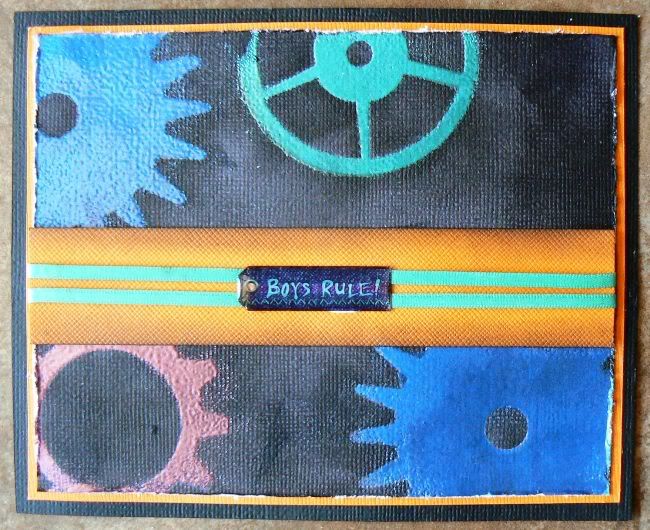
Supplies
Mask set
Distress inks
Embossing powder (optional)
Blending tool
Heat gun
Cardstock
Note: Mask sets that have negative pieces work best for this technique. For example the Tim Holtz Ideology clock and gear set I used for my example
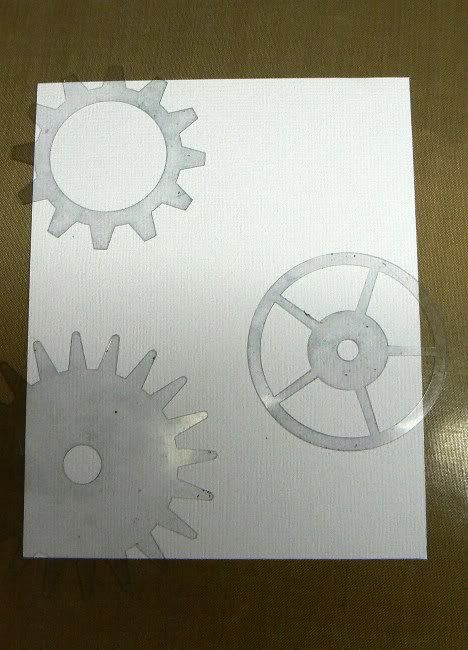
Step One: Gather all your supplies together. Cut your cardstock to size. Place your mask pieces onto your cardstock sticky side down.
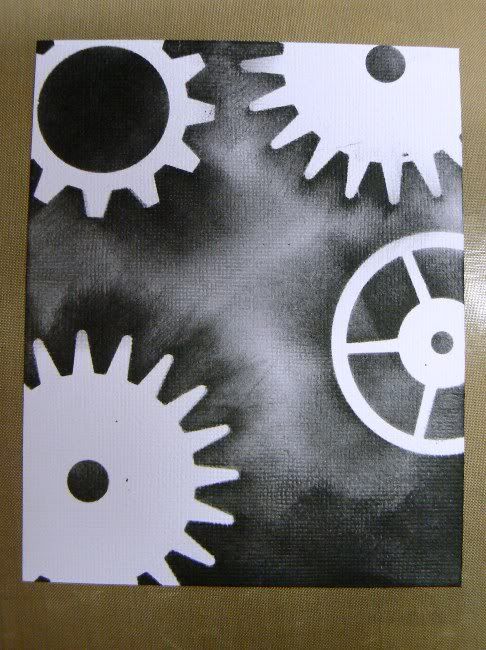
Step Two: Using your blending tool and distress ink, ink the cardstock around your mask pieces. Be careful to not move the mask pieces while doing this to ensure a clear and crisp image.
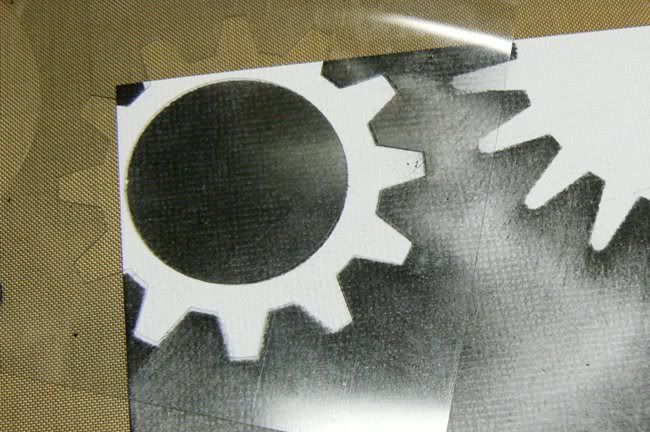
Step Three: Separate the negative of your mask image from its storage sheet. Using it as a stencil, line it up carefully over your masked image.
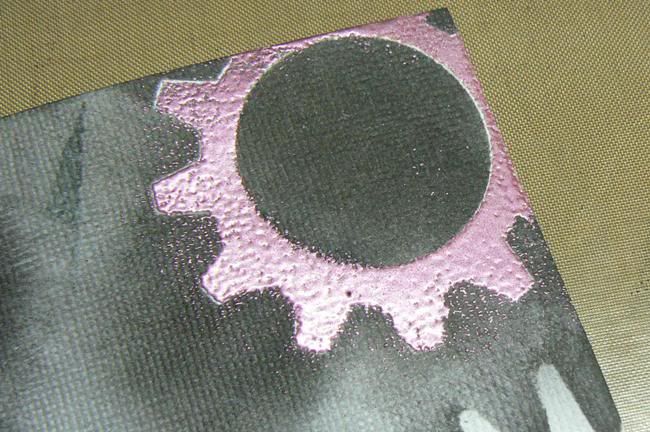
Step Four: At this point you have several options. You can colour in your stencil image with various colours of paint or distress ink. At the last minute I decided to use some American Crafts Zing metallic embossing powers for mine.

Step Five:Use the stencil to apply the embossing ink to one image at a time. Remove the stencil and add the embossing powder. Shake off the excess powder onto a scrap piece of paper and funnel it back into its container. Heat the embossing powder using your heat gun. Once that image has cooled then move onto the next using a different colour.
Note: If you've selected to use paint or distress inks then just colour one image in at a time waiting for the paint to dry before moving on to the next image to avoid smudging. Speed up the process by drying each image with your heat gun.

Step Six: Go back and colour in the background colour until none of the cardstock is showing. For the painted and distressed inked images, you will need to cover up your coloured images with your mask pieces to protect the colour. The embossed images will resist the distress ink so you don't need to cover those.

This is an example of the same mask pieces used with several bright colours of distress inks instead of embossing powder.
This is another easy background technique suitable for cards, tags, ATC's and scrapbooking layouts. You can cover an entire surface area or use the technique to highlight key areas.
No comments:
Post a Comment